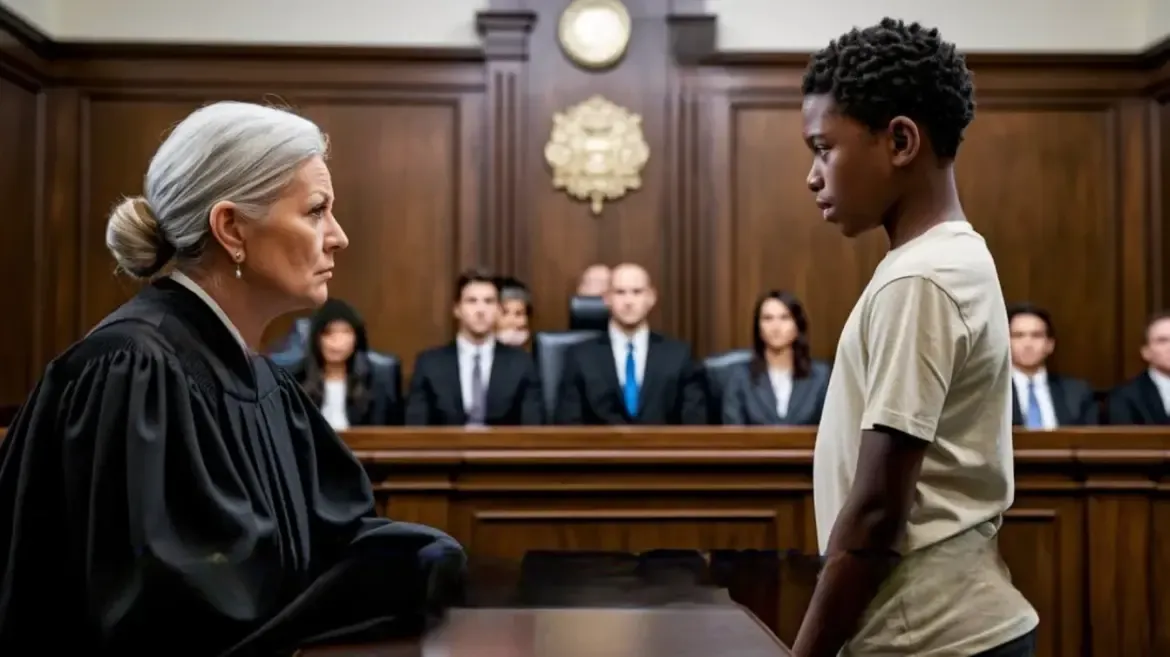The prosecutor called his next witness, Mrs. Thompson, the owner of the stolen car. She was a middle-aged woman with a stern expression, clearly upset about the ordeal. She took the stand and recounted her story.
Your Honor, she began, I parked my car outside my house that night. When I woke up the next morning, it was gone. I reported it stolen, and later that day the police found it with the defendant inside.
David listened intently, his mind racing. When it was his turn to cross-examine, he approached the stand with a calm demeanor. Mrs. Thompson, David began, You said your car was stolen that night.
Did you see anyone take it? No, she replied. I was asleep. David nodded.
And when the police found the car, was there any damage to it? Broken windows? Forced locks? Mrs. Thompson frowned. No, the car was intact. David turned to the jury.
So the car was stolen without any signs of forced entry. How do you think the thief got in? Mrs. Thompson hesitated. I… I don’t know.
Maybe they had a key. David raised an eyebrow. A key? Do you know how many people have access to your car keys? Just me and my husband, she replied.
David paused, letting the answer sink in. Thank you, Mrs. Thompson. No further questions.
As Mrs. Thompson stepped down, David turned to the judge. Your Honor, I’d like to call my first witness, Mr. James Thompson, Mrs. Thompson’s husband. The prosecutor stood up, objecting.
Your Honor, this is highly irregular. The defense didn’t disclose this witness. David responded calmly.
Your Honor, Mr. Thompson’s testimony is crucial to understanding the full context of this case. The prosecution has had ample opportunity to investigate. The judge considered for a moment, then nodded.
Overruled. Call your witness. Mr. Thompson, a tall man with a nervous demeanor, took the stand.
David began his questioning. Mr. Thompson, do you own a black sedan? Yes, he replied. And do you have access to the keys? Yes.
David nodded. On the night in question, did you lend your car to anyone? Mr. Thompson hesitated, glancing at his wife. I… I lent it to my nephew, Alex.
He needed it for a date. The courtroom erupted in murmurs. Mrs. Thompson looked shocked.
David pressed on. So, your car wasn’t stolen. You lent it to your nephew, is that correct? Mr. Thompson nodded.
Yes. David turned to the jury. So, the car wasn’t stolen.
It was borrowed. And yet, the prosecution is trying to convict me for grand theft auto based on a false premise. The prosecutor stood up, flustered.
Your Honor, this is irrelevant. The defendant was still found in the car without permission. David didn’t wait for the judge to respond.
Your Honor, if the car wasn’t stolen, then the entire charge of grand theft auto is baseless. The prosecution’s case is built on a lie. The judge leaned back, clearly intrigued.
Continue, Mr. Miller. David turned back to Mr. Thompson. One last question.
Did you inform the police that you had lent the car to your nephew? Mr. Thompson shook his head. No, I didn’t think it was important. David nodded.
Thank you, Mr. Thompson. No further questions. As Mr. Thompson stepped down, the courtroom was in an uproar.
The prosecution’s case was unraveling and David was just getting started. The prosecutor, now visibly flustered, called his next witness. Detective Harris, the lead investigator on the case.
Harris, a seasoned detective with a calm demeanor, took the stand and began his testimony. Your Honor, Harris began. We have video footage from a nearby security camera that shows the defendant entering the vehicle on the night in question.
This footage clearly places him at the scene. David’s heart raced. He had anticipated this.
The video was the prosecution’s strongest piece of evidence, but David had spent hours analyzing it. He knew there was more to it than met the eye. When it was his turn to cross-examine, David stood up, his confidence growing.
Detective Harris, he began. You mentioned that the video footage shows me entering the vehicle. Can you describe what exactly is visible in the footage? Harris nodded.
The footage shows a figure approaching the car, opening the door, and getting inside. The figure matches the defendant’s description. David paused, letting the answer hang in the air.
Detective, does the footage show the person’s face clearly? Harris hesitated. No, the footage is grainy and the person’s face is not clearly visible. David nodded.
So, the footage doesn’t conclusively identify me as the person entering the car, is that correct? Harris shifted uncomfortably. That’s correct, but the figure’s clothing and build match your description. David turned to the judge.
Your Honor, may I approach the witness? The judge nodded. Proceed. David walked up to the stand and handed Harris a document.
Detective, this is a still image from the security footage. Can you point out where the figure’s face is clearly visible? Harris studied the image, then shook his head. As I said, the face is not clearly visible.
David turned to the jury. So, the prosecution’s key piece of evidence doesn’t conclusively identify me as the person in the video. Isn’t it possible that the person in the footage is someone else? The prosecutor stood up, objecting.
Your Honor, this is speculation. The defendant is clearly trying to mislead the jury. David didn’t wait for the judge to respond.
Your Honor, if the prosecution’s evidence doesn’t conclusively prove my involvement, then their case is based on assumptions, not facts. The judge leaned forward, her earlier curiosity now fully engaged. Overruled.
Continue, Mr. Miller. David turned back to Harris. Detective, did you investigate other leads? For example, did you consider that the person in the footage might be Mr. Thompson’s nephew, Alex? Harris hesitated.

